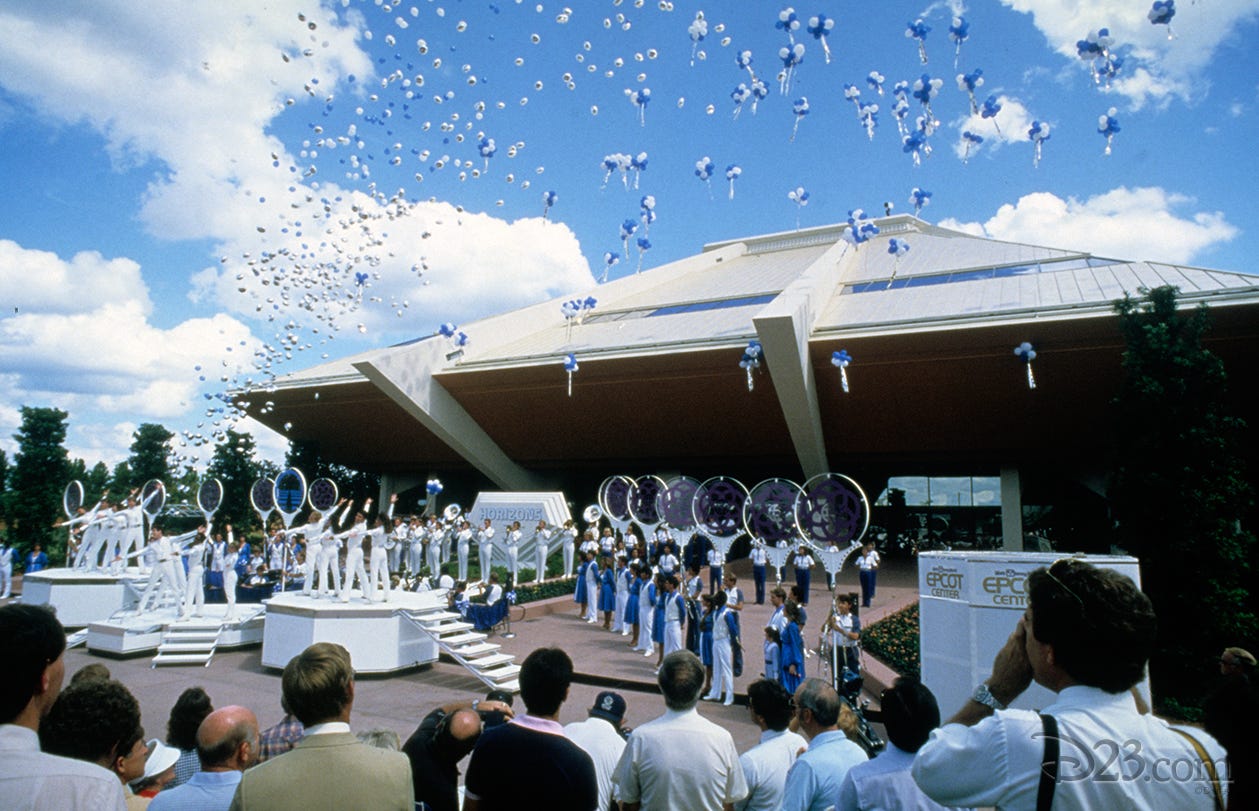If You Can Dream It, You Can Do It... (If Disney Doesn't Destroy It First)
The 21st Century died in 1999.
The future smelled like l'oranges. No, seriously.
But what's a l'orange?
It's the year 2000, Day 1 of the 21st Century. But unfortunately for Father Time, it's two decades late to the party.
The invites went out in 1981, celebration kicked off in 1982, and the VIP guest everyone wanted to sit with showed up in 1983. So by the time Father Time arrived, the party hosts were cleaning the event up. It was a wrap. Move on to the next.
Before Mission Space made people question their life choices, Disney’s vision of the 21st century came in the form of a spaceship perched on the horizon, smelling of l'orange groves and blasting the most bright-eyed 1980s music to have ever 1980-ed.
After an initial identity crisis under the alias Futureprobe (too weird) and Century III (too old), Epcot's Horizons brought the 21st Century to life for 16 years before bowing out just in time for the actual Y2K to kick off the ultimate clown show.
You see, Horizons recalibrated what the 21st Century would look like, saw the new reality and abandoned ship.
..at least, that's what I like to say.
Reality is, Disney thought the entirety of Epcot's attraction lineup was always going to be funded by a company itching to have their logo slapped on the marquee at the cost of 8 to 9 figures. And even as that business model was swiftly dying out, they chomped at the slightest opportunity to ride it out any longer.
Horizons was arguably the greatest dark ride ever built, no expenses spared (well, except for that Nova Cite Mag-Lev, but don't worry about that). It was the embodiment of Epcot Center, encapsulating the whole purpose of the park, every core component, into one attraction.
The attraction had all of WED's Imagineers zoned in on it, so every ounce of detail, story, theming, score, artistry, and so forth that could be put into it was. Truly, a masterclass of a dark ride.
But the dream couldn’t last. Corporate decay seeped into the cracks. The sponsors dried up. The storytellers were replaced by shareholders. And just like that, the most hopeful attraction in Epcot’s lineup was buried beneath concrete and silence.
The interesting thing with Horizons is not just that it accurately predicted some of the 21st Century, but that it was an optimistic vision of the future. A unicorn in today's times.
Disney level sparkle, wholesome, rainbows and kittens? Sure. But not overtly so. It was still pragmatic and, somehow, without a lick of cynicism or pessimism in sight. A revolutionary feat in today's times.
Horizons was hopeful. And as society stands, hope is on the rocks and the bartender's clocked out.
The optimism of Epcot’s thesis-statement attraction ended up outdated. Too sincere. Too analog.
And that shiny idea of a better tomorrow, replaced by something divisive, intense, at times harmful, other times unpleasant.
By which, of course, I'm referring to Mission Space.
And really — what else would I be referring to?
Instead of evolving ambitious dreams, money talked and built (or bought) a polarizing reality with questionable effects on those who experience it.
And in the utmost irony, the attraction that introduced people to the future has left a wake of the same longing for the past.
Perhaps it wasn't a ride that we lost, it was a future that believed in us.
"We thought Horizons was just right. There always is a horizon out there. If you try hard enough, you can get to where it is – and when you do, you find there’s still another horizon to challenge you, and another beyond that."
Are we still reaching New Horizons?
Oh, and a l'orange is a lime orange hybrid, by the way.








